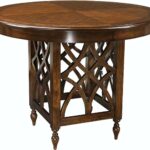For people who want to buy couches, they want to know the average couch dimensions.
What’s the average couch length?
Approximately 84 inches is the average couch length. The range of lengths is between 72 and 96 inches, so there is some variation in this. A traditional couch will be longer because it has arms, whereas sleek armless sofas will be closer to the shorter end of the scale. The length of a loveseat is 48 to 72 inches, making it slightly shorter.
It can be difficult to buy a new sofa online because there are so many dimensions to take into account, including sofa length, depth, and height. Do not worry; we have already done all the research.
Please continue reading as I give you more specific information about the typical couch length.
Table of Contents
What Is The Average Couch’s Length?
Determine the length of the couch before making a purchase. This guarantees that it will fit into the area you want. The average length of the couch is 84 inches, though it is possible to find some as small as 72 and some as long as 96 inches.
Furthermore, you can measure the couch’s height. The distance between the couch’s highest point and the floor will be indicated by this. Most couches and loveseats range in height from 30 to 36 inches, depending on shape. It is probably taller if there is a traditional arched couch. Maybe a little lower than a typical couch.
The couch’s width comes next. By measuring the distance between the space in front of the sofa’s seat and the back of the couch, as well as the outside edge of the couch all the way to the back, you can determine how deep the couch is. On average, a narrow or overstuffed seated couch can be 31 inches wide and 21 inches deep. It might be closer to 40 inches wide and 26 inches deep if the couch is curved or exceptionally deep.
Read about: Distressed White Kitchen Cabinets
How Long Is A Couch For Four People?
For this many people, it is best to go for a couch that is longer, sticking as close to 96 inches as possible. Just make sure there is enough space in the room you want to put the couch for one that long. If you need to fit lots of people on one couch, a sectional couch, which consists of several pieces put together, can be a good option.

Read about: How Wide Should A Hallway Be?
Measure Space For A Couch
Given all of this, let’s look at how to measure your living room correctly to determine the size sofa you require (or can fit).
If you don’t measure the area before buying a sofa, you might end up with a choice that is either too big for the space or doesn’t fit at all.
In light of this, let’s examine two quick suggestions that will assist you in selecting the ideal couch for your living room:
Measure Entries & Passageways
No matter how beautiful a couch is, you won’t be able to display it in your living room if it can’t fit through the door.
For this reason, you want to make sure you start by measuring each of the doors and passageways through which you’ll need to maneuver the couch once it gets to your home.
Doing so is simple.
- Simple measurements of the doors’ height, width, and entry clearance should be taken first. Due to the possibility that your sofa will need to be turned on its side to fit in the space, you should also measure the diagonal width of your door.
- You should also make a note of any unusual corners, wall artwork, light fixtures, and other potential obstacles that might prevent the sofa from being moved.
Measure Room Dimensions
You should measure your room after you have determined the width of your doorways.
- Start by measuring the distance from the door to the far wall—the bigger the space, the more room you’ll have to maneuver your furniture.
- You’ll also want to measure the length and width of the entire room, as well as the height of your halls—as this can affect how tall your furniture appears.
Measure Couch
Of course, you’ll also want to measure your sofa (or mark the area with tape where you want to put your sofa) to see how it will look in the area you’re trying to furnish.
- To measure the length of the sofa, simply measure from one arm to the other, making sure to take the measurement at the widest point.
- Once you’ve done this, measure height by going from the tallest point of the sofa to the ground, measure the depth by going from the edge of the seating to the back cushion.
- You can also measure the diagonal depth of the sofa. To accomplish this, merely set a straight edge facing the front arm of the couch at the sofa’s tallest point. With your measuring tape in hand, proceed to the sofa’s back corner and measure the distance to the point where the edge and tape meet.
Read about: Average Hallway Width
How To Choose Couch?
Standard Couch
Average Dimensions: 70-84 inches long x 30-40 inches wide x 30-40 inches tall
A typical sofa is simple to move and suitable for small to medium rooms. It can be placed against a wall, at an angle, or floating in the middle of the space. The length and number of seat cushions on a typical sofa are typically 86 inches on average. Make sure to leave 12 to 18 inches between the coffee table and the sofa for space for the legs.
Sectional Couch
Average Dimensions: varies according to setup.
Sectionals typically have an L-shaped design with either the left or right arm facing the user. For very large spaces that require a lot of seating, U-shaped sectionals are perfect. It is imperative to measure the space and the furniture in question. If the sectional is not placed against a wall, make sure to leave two or more feet of clearance all around it to maintain comfortable walkways.
Sofas are less effective than sectionals at dividing spaces. In order to make the space feel enclosed and defined, the right-angled chaise (whether on the left or right) mimics the opposite wall in a right-angle fashion.
Some sectionals can be divided up into several separate pieces of standalone seating (a lounge or extra chair). In a much smaller way than some sofas, this is also possible.
For larger families and gatherings, U-shaped sectionals are excellent sofas because they provide lots of seating. These couches typically have two identical chaises on either side of a center sofa.
Convertible Sleeper Couch
Average Dimensions: 70-84 inches long x 30-40 inches wide x 30-40 inches tall
The convertible sleeper sofa doubles as a place to hang out with friends and family during the day and, at night, it converts into a full- or queen-sized bed that has been tidily tucked away beneath the sofa cushions. Just be sure to leave enough room to extend the hidden bed as necessary.
Settee/loveseat Couch
Average Dimensions: 52-72 inches long x 30-40 inches wide x 30-40 inches tall
The loveseat can be used to smuggle comfortable seating into confined spaces even though it is typically seen in small, formal seating areas. The length of a loveseat can range from 52 to 72 inches, and it can comfortably seat two people. Typically, there are two separate seat cushions or one single cushion for a cleaner line. The loveseat’s versatility in terms of style lets it be found in both traditional and contemporary settings.
Daybed Couch
Average Dimensions: 70-80 inches long x 35-45 inches wide x 30-40 inches tall
In smaller rooms where you need seating but occasionally want to host an overnight guest, a daybed is the ideal solution. This choice makes it simpler to change from couch to bed than the convertible sleeper, which tucks the bed inside the sofa. The daybed-style sofa can be utilized to its full potential in apartments and guest rooms with multiple uses.
Read about: How To Arrange 2 Twin Beds In A Small Room Perfectly?
Final Words
The post talked about the average couch length.
Online sofa shopping can be intimidating, especially if you are unsure of the size of sofa that will fit in your space. We’ve described a simple method for measuring your space for a sofa above.
Seat height and depth, for example, are secondary dimensions that are more important for comfort than for positioning. If there are tall people in your home, go for a sofa with a taller seat height and a deeper seat. Do the opposite if your household is smaller.
For reading, I’m grateful.













